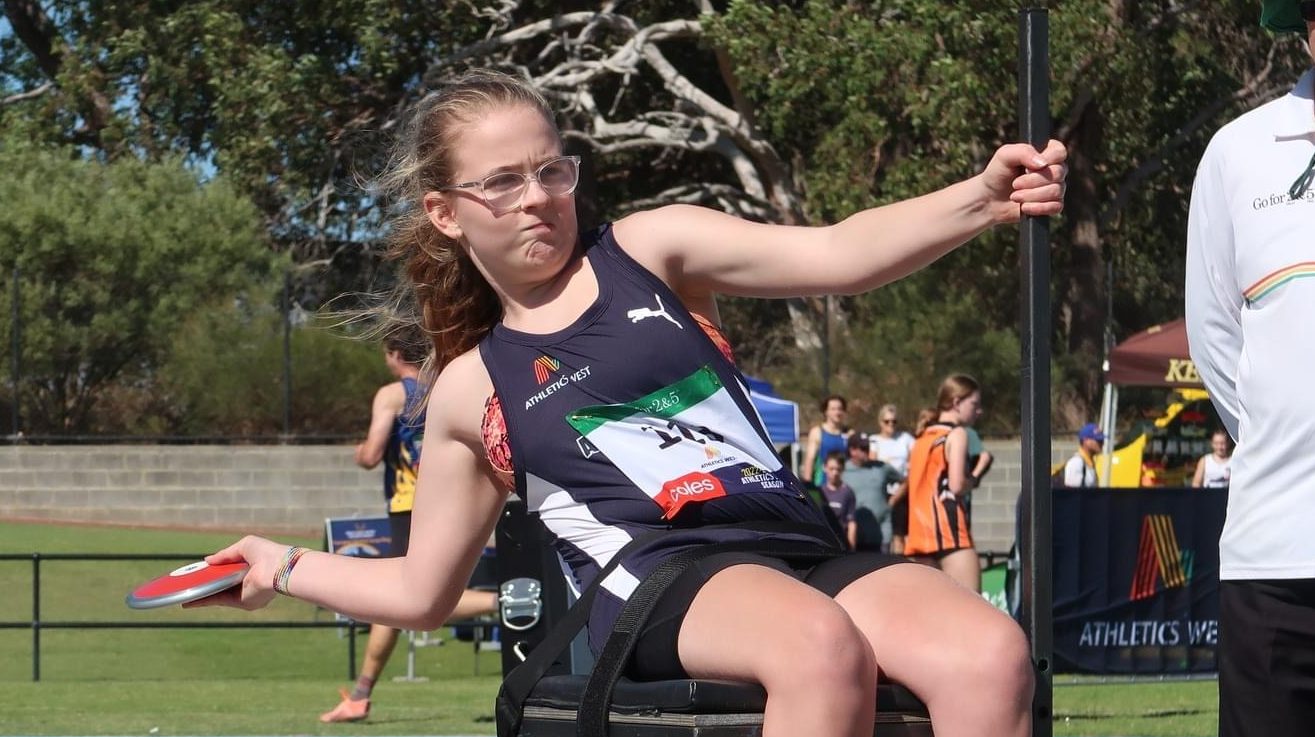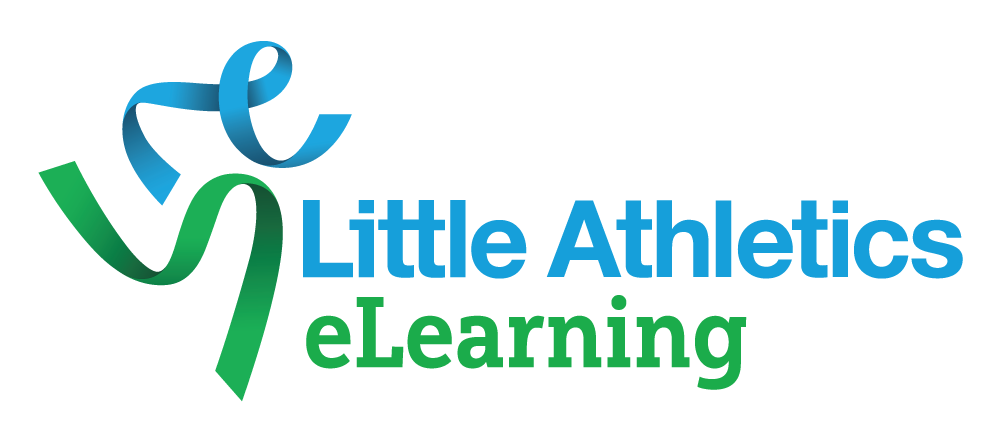Balance And Coordination

Balance and coordination are important fitness skills in athletics.
What is Balance and Co-ordination?
Balance
There are two types of balance.
- Static balance is the ability to remain upright and steady when stationary such as when holding the start position in a race.
- Dynamic balance is the ability to remain upright and steady when moving, such as when moving from one leg to the other during running.
Coordination
The ability to use different parts of the body together smoothly and efficiently such as when coordinating vision + leg muscles to jump from the long jump board.

How to support athletes with balance and coordination using the TREE framework.
T – Teaching/coaching style
R – Rules and regulations at the Centre
E – Environment
E – Equipment
Teaching/Coaching Style
How the volunteer, parent or coach organises the events, encourages skill development and communicates information to athletes.
How to teach new skills:
- Break down the events to smaller steps.
- Use demonstration or videos.
- Check for understanding
- Use open ended questions such as “What is the first step”.
- Practice the steps.
- Use games to practise skills in a less competitive environment.
- Some steps may need to be practiced on their own.
- Repeat the steps as many times as needed.
- Offer more opportunities to practice.
- Put the steps together.
- Build upon each step as the skill is learned.
- Use positive feedback specific to the action.
- Positive feedback or praise is used to build trust.
- Specific feedback focuses on the action, such as “you lifted your knees higher”. This helps athletes learn new motor skills.
- You need trust first before suggesting anything to change.
- With permission and once you have built trust, use video feedback of the athlete to show their technique and discuss what they could try differently.
Teaching/Coaching for Athletes Using a Frame Runner
- Frame running allows the athlete to run in a supported and balanced way.
- The frame has 3 wheels, a handlebar, body plate and saddle.
- The athlete moves themselves using their legs.
- The large wheels mean the frame can be easier to move than a walking frame and the width provides stability for safety and balance, especially when running at speed.
- Athletes using a frame runner will perform better on a synthetic track but can participate on grass.
- The frame runner can become unbalanced if an athlete turns too sharply when cornering at speed.
- If the frame is wobbling a lot, check:
- The size of the frame (athlete may need a larger frame with a wider wheelbase).
- The tension of the compensator spring.
- How much the athlete is pulling on the handlebars when moving.
Set up of the frame is essential to a fair and safe competition. The first set up will likely be done by a physiotherapist or the Frame provider / loan service. Beginner athletes may take time to get the fit just right for them. The saddle is positioned so that the athletes’ feet push off the ground and enough support is provided to the body that they don’t collapse.
- Safety.
- Athletes wear a helmet.
- Consider padded bike pants to reduce saddle soreness and chafing.
- Check that the front brake calipers are on and any quick release wheel locks are tight.
- Getting on and off the frame;
- Rear brakes on.
- Support from helpers who know the athlete.
- Check tyre pressure every time.
- May need to stop the frame rolling forward by using a wall or block in front of the front wheel.
- Storage.
- May need to store at the Centre.
- Technique.
- There are no “wrong” movements, but some will be more efficient and effective than others.
- The athlete and coach will practise;
- The athletes’ position on the Frame Runner which needs to be stable and allow leg movements.
- The position of the athletes’ head – look in the direction of the race.
- The athletes’ push-off and footwork at the start and running the race – optimal push off needed for speed.
- The position of the athletes’ toes during the race – are they lifting up for each stride, do they knock in to each other or the frame.
- The athletes position enables good breathing – the trunk is not squashed or bent too far forward or backward.
- Build up to long strides.
- Running technique when increasing speed.
- Practise, practise, practise – Repetition of the desired movement pattern lays down new brain pathways.
Competition Frame Running is available to people with the following functional impairments;
- Hypertonia (high tone).
- Spasticity.
- Dystonia.
- Rigidity.
- Ataxia.
- Athetosis/Chorea.
Athletes may wish to be classified for Frame running. Classification is through Athletics Australia.
Teaching/Coaching for Athletes Using a Race Wheelchair
- The wheelchair has 3 wheels (2 large in the back and one smaller in the front), hand rims to push, steering system (compensator), braking system and seat (called a cage).
- The compensator allows the athlete to set the direction of the wheelchair without needing to steer. It holds the wheel in one position so the wheelchair travels in an arc but does not need the athlete to steer. The compensator has a bolt on each side which can be screwed in or out depending on the lane.
- The athlete moves themselves using their arms.
- The athlete will sit or kneel.
- Athletes using a race wheelchair will perform better on a synthetic track but can compete on grass.
- Can compete against peers who are running with safety procedures in place for the end of the race and for curves. You may want to consider a lane between each athlete.
Set up of the wheelchair is essential to a fair and safe competition. The set up will be done by a physiotherapist or the wheelchair provider / loan service.
- Safety.
- Athletes wear a helmet.
- Athletes wear gloves.
- Check and/or pump-up tyres.
- The wheelchairs can easily tip backwards if the athlete leans back past a certain point. Make sure the athlete knows how far they can safely lean back.
- Getting on and off the wheelchair
- Brakes on.
- Support from helpers who know the athlete only if needed.
- Pre-race.
- Adjust and set compensator at the correct angle to arc around the track.
- Access to the track is needed.
- Time is needed.
- Start.
- Front wheel in Centre of lane and two back wheels are evenly between the lane lines.
- End.
- Use steering compensator after the finish line to keep following the track around. It is important that all wheelchair users follow the track around after the finish line so they do not run in to each other. They turn by tapping the side of the compensator in the direction they want to go.
- Storage.
- May need to store at the Centre.
- Technique.
- The athlete and coach will practise;
- The athletes’ position in the seat.
- The position of the athletes’ trunk and head – lean forward and look in the direction of the race.
- The athletes’ push stroke.
- Hands contact the push rim forward and with elbows bent.
- Hands drive down and follow the push rim around as wheel turns.
- Push off rim at the rear in a flicking motion and let go of rim.
- Bring arms up and start again.
- The athletes steering.
- Tap compensator left or right during the race to adjust the angle slightly.
- The braking system.
- Most braking is controlled by the hands on the back wheels.
- Front wheel brake can be used but at high speed will cause the wheelchair to skid.
- Build up to fast powerful pushes.
- The athlete and coach will practise;
- Practise, practise, practise – Repetition of the desired movement pattern lays down new brain pathways.
Competition wheelchair racing is available to people with a qualifying disability;
- Amputee.
- Spinal cord injury.
- Cerebral palsy.
- Spina bifida.
Rules and Regulations at the Centre
Can be modified at the Centre so athletes can participate. Please note that specific rules may apply to higher level competition.
- You can modify the event.
- You can reduce the height, weight or size of equipment.
- You can swap standard athletics equipment for modified equipment such as the turbojav or bean bags.
- You can use equipment with bright colours, different textures or different sounds.
- You can modify for safety when using equipment
- Staggered starts or rolling starts (athletes starting at set intervals).
- Extra lane between competitors.
Environment
Changes you can make to the physical space to be inclusive.
To provide a space that everyone can access and use, it is important that the parking lot, entry to field, field, track, viewing area, and amenities can be used by everyone.
- Prepare the environment by organising seats/benches in the waiting areas.
- Keep the environment organised and store equipment in the same place each time so athletes don’t trip.
- Think about lane allocations.
- Encourage the athlete to use the lane with the smoothest surface to reduce risk of injury due to reduced balance and body awareness.
- Sometimes the inside lane has a lip on the track which can be a tripping hazard.
- The outside lane has a gentler curve which is helpful if using equipment or the athlete needs help from an adult (for example parent or support worker or therapist).
- Encourage the athlete to use the lane with the smoothest surface to reduce risk of injury due to reduced balance and body awareness.
- Use bright markers or ribbons to show;
- Take off areas.
- Jump bar.
- Throwing line.
- Path to run in.
Equipment
Modify athletics equipment or use disability related Assistive Technology so the athlete can participate. We have more information on Assistive Technology suppliers.
- Athletes with reduced balance and coordination will likely need a seat while waiting at and between events.
- Keep equipment in the same location each time and encourage athletes to return equipment to the correct location.
- Assistive Technology (equipment) is used to support balance so the athlete can compete. You can allow the athlete to use their everyday equipment. This is Assistive Technology that they use in their everyday life, not for a short-term injury.
- Crutches.
- Walking frame.
- Wheelchair.
- Orthotics.
- Prosthetics.
- Specialised Assistive Technology for athletics can be used.
- Frame Runner.
- Race Wheelchair.
- Throwing frame.
- Athletes may need a helper adult (for example parent or support worker or therapist) to use the equipment safely and effectively, especially when learning. Ask the athlete what they need.
- Don’t touch or move an athlete’s Assistive Technology without their permission. If an athlete using Assistive Technology looks like they need help, ask first before assisting.
- Come and try days are an opportunity for athletes with disability to try Assistive Technology which might help them in athletics. Athletes without disability can try the equipment also to gain an understanding of how complex they are to use.
Sources
Cerebral Palsy International Sports and Recreation Association
TREE framework developed by the Australian Sports Commission





